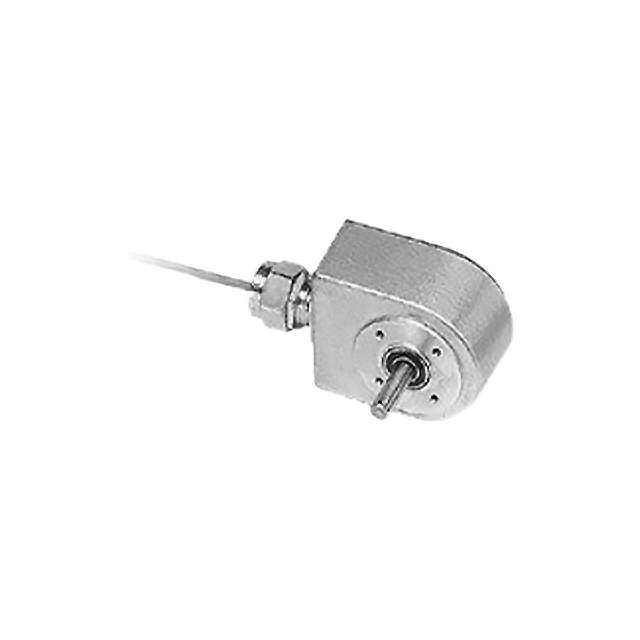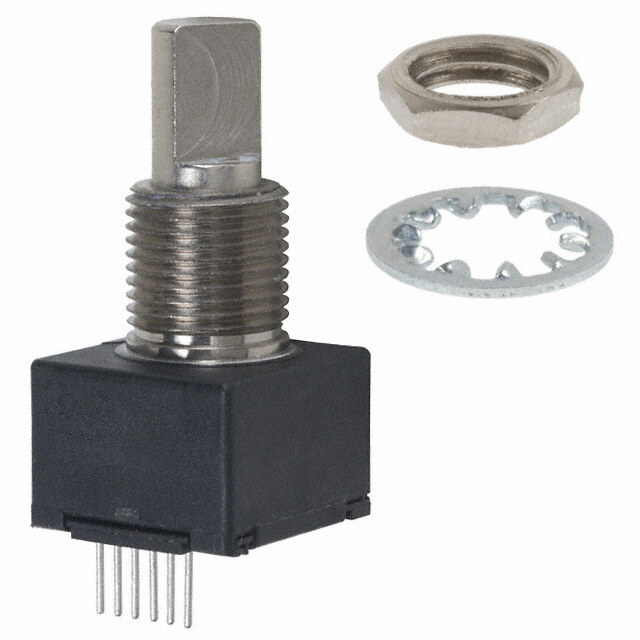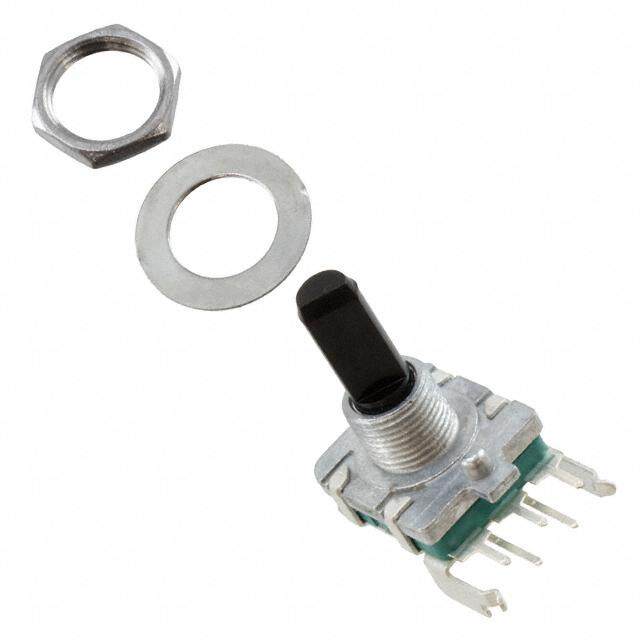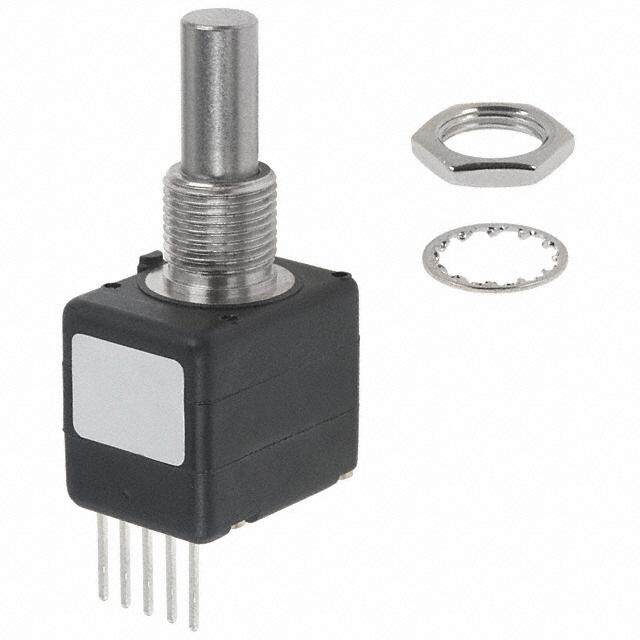- 型号: AS5045-ASSU
- 制造商: AUSTRIAMICROSYSTEMS
- 库位|库存: xxxx|xxxx
- 要求:
| 数量阶梯 | 香港交货 | 国内含税 |
| +xxxx | $xxxx | ¥xxxx |
查看当月历史价格
查看今年历史价格
AS5045-ASSU产品简介:
ICGOO电子元器件商城为您提供AS5045-ASSU由AUSTRIAMICROSYSTEMS设计生产,在icgoo商城现货销售,并且可以通过原厂、代理商等渠道进行代购。 AS5045-ASSU价格参考。AUSTRIAMICROSYSTEMSAS5045-ASSU封装/规格:编码器, 。您可以下载AS5045-ASSU参考资料、Datasheet数据手册功能说明书,资料中有AS5045-ASSU 详细功能的应用电路图电压和使用方法及教程。
AMS(艾迈斯)的AS5045-ASSU是一款高精度、非接触式的磁性旋转编码器,广泛应用于各种需要精确角度测量和位置反馈的场景。以下是其主要应用场景: 1. 工业自动化 AS5045-ASSU在工业自动化设备中有着广泛应用,尤其是在需要精确控制电机转速和位置的场合。例如,伺服电机、步进电机等精密驱动系统中,该编码器可以提供高分辨率的角度信息,确保电机的精准定位和速度控制。它还适用于机器人关节的位置反馈,确保机械臂的动作更加平稳和准确。 2. 汽车电子 在汽车行业中,AS5045-ASSU可用于电动助力转向系统(EPS)、油门踏板位置传感器、变速箱换挡机构等关键部件。这些应用要求编码器具备高可靠性和抗干扰能力,以确保车辆的安全性和稳定性。此外,它还可以用于电动汽车的电机控制系统,提供实时的转子位置信息,帮助实现高效的能量管理。 3. 医疗设备 医疗设备对精度和可靠性要求极高,AS5045-ASSU能够满足这些需求。例如,在手术机器人、影像设备(如CT扫描仪)、呼吸机等设备中,编码器用于监测运动部件的位置,确保设备的精确操作,保障患者的安全。 4. 智能家居与消费电子 在智能家居领域,AS5045-ASSU可用于智能锁、自动窗帘、扫地机器人等设备中,提供角度和位置反馈,确保设备的顺畅运行。在消费电子产品中,它也可以用于无人机的姿态控制、相机云台的稳定系统等,提升用户体验。 5. 航空航天 航空航天领域对编码器的要求极为严苛,AS5045-ASSU凭借其高精度、低功耗和宽工作温度范围,适用于飞行控制系统、卫星姿态调整系统等关键部位,确保设备在极端环境下仍能正常工作。 总之,AS5045-ASSU以其高精度、非接触式设计、宽工作温度范围和强大的抗干扰能力,成为众多高精度应用场景的理想选择。
| 参数 | 数值 |
| 产品目录 | |
| 描述 | IC ENCODER PROG 12-BIT 16-SSOP编码器 12-bit rotary position sensor |
| 产品分类 | |
| 品牌 | ams |
| 产品手册 | http://ams.com/eng/content/download/1288/7223/496 |
| 产品图片 |
|
| rohs | 符合RoHS无铅 / 符合限制有害物质指令(RoHS)规范要求 |
| 产品系列 | ams AS5045-ASSU- |
| 数据手册 | http://www.ams.com/eng/content/download/1288/7223 |
| 产品型号 | AS5045-ASSU |
| 产品 | Magnetic Encoders |
| 产品种类 | |
| 供应商器件封装 | 16-SSOP |
| 其它名称 | AS5045ASSU |
| 包装 | 管件 |
| 商标 | ams |
| 安装风格 | SMD/SMT |
| 封装 | Tube |
| 封装/外壳 | 16-SSOP(0.209",5.30mm 宽) |
| 工作温度 | -40°C ~ 125°C |
| 工厂包装数量 | 77 |
| 应用说明 | http://www.austriamicrosystems.com/eng/content/view/download/11922http://www.austriamicrosystems.com/eng/content/view/download/11921 |
| 感应范围 | 45mT ~ 75mT |
| 标准包装 | 77 |
| 特性 | 可编程 |
| 电压-电源 | 3 V ~ 3.6 V,4.5 V ~ 5.5 V |
| 电流-电源 | 21mA |
| 电流-输出(最大值) | 4mA |
| 类型 | 线性,旋转编码器 - 可编程 |
| 输出类型 | 数字式,PWM,12 位串行 |

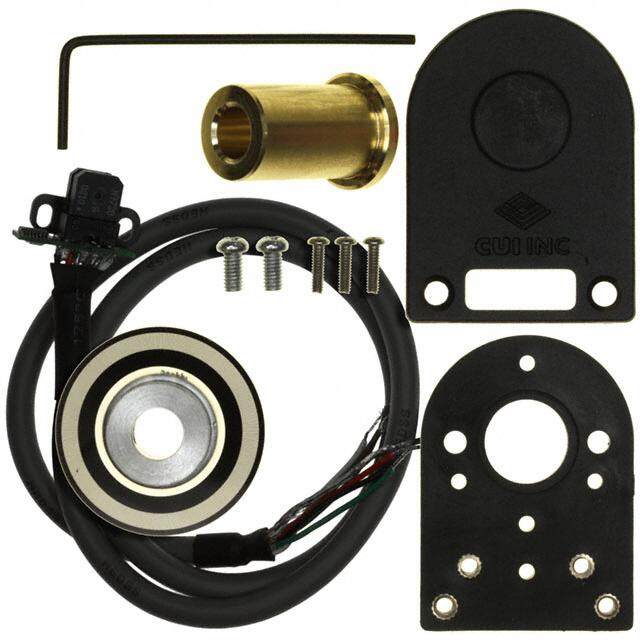

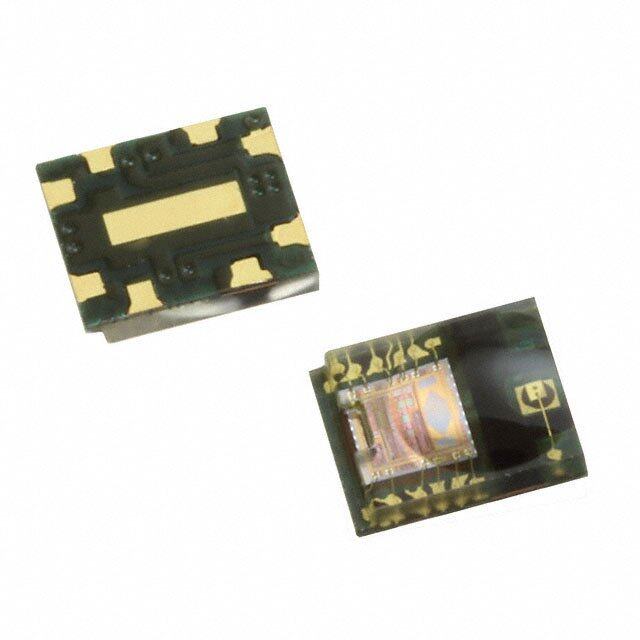
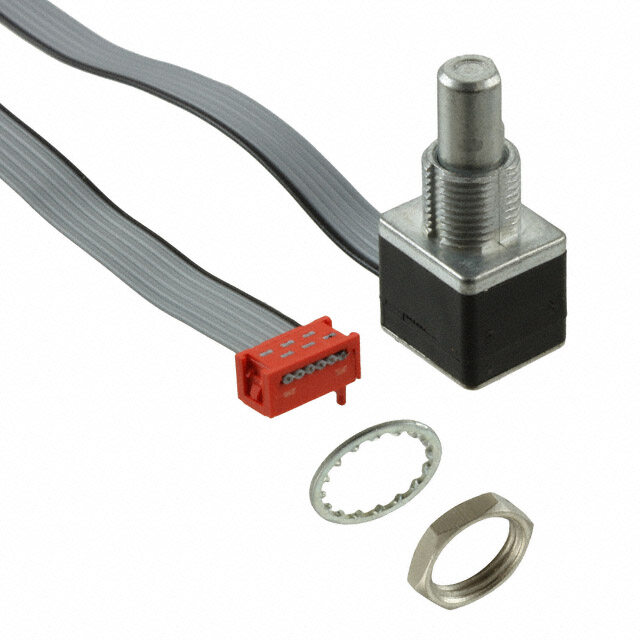

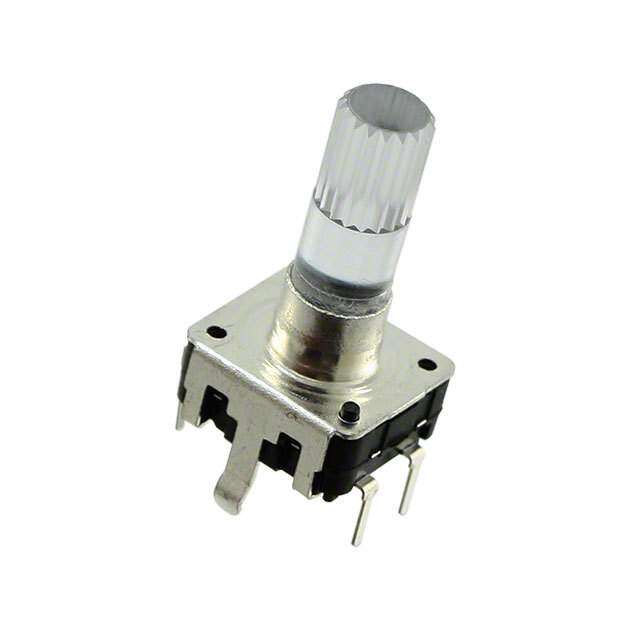


- 商务部:美国ITC正式对集成电路等产品启动337调查
- 曝三星4nm工艺存在良率问题 高通将骁龙8 Gen1或转产台积电
- 太阳诱电将投资9.5亿元在常州建新厂生产MLCC 预计2023年完工
- 英特尔发布欧洲新工厂建设计划 深化IDM 2.0 战略
- 台积电先进制程称霸业界 有大客户加持明年业绩稳了
- 达到5530亿美元!SIA预计今年全球半导体销售额将创下新高
- 英特尔拟将自动驾驶子公司Mobileye上市 估值或超500亿美元
- 三星加码芯片和SET,合并消费电子和移动部门,撤换高东真等 CEO
- 三星电子宣布重大人事变动 还合并消费电子和移动部门
- 海关总署:前11个月进口集成电路产品价值2.52万亿元 增长14.8%
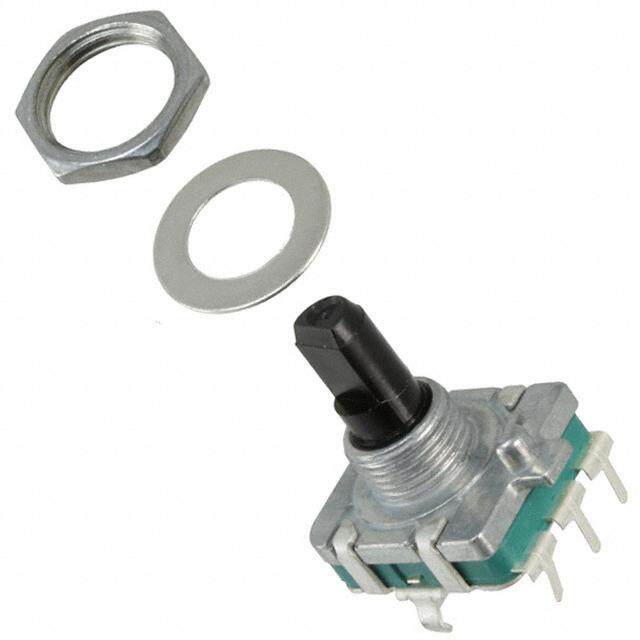

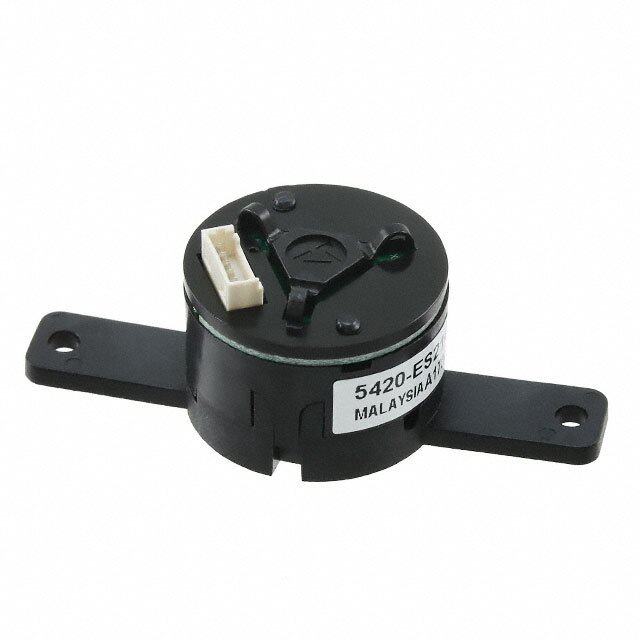

PDF Datasheet 数据手册内容提取
AS5045 Data Sheet 12 Bit Programmable Magnetic Rotary Encoder 1 General Description 3 Key Features The AS5045 is a contactless magnetic rotary encoder (cid:131) Contactless high resolution rotational position for accurate angular measurement over a full turn of encoding over a full turn of 360 degrees 360°. It is a system-on-chip, combining integrated Hall (cid:131) Two digital 12bit absolute outputs: elements, analog front end and digital signal processing - Serial interface and in a single device. - Pulse width modulated (PWM) output To measure the angle, only a simple two-pole magnet, (cid:131) User programmable zero position rotating over the center of the chip, is required. The (cid:131) Failure detection mode for magnet placement magnet may be placed above or below the IC. monitoring and loss of power supply The absolute angle measurement provides instant (cid:131) “red-yellow-green” indicators display placement of indication of the magnet’s angular position with a magnet in Z-axis resolution of 0.0879° = 4096 positions per revolution. This digital data is available as a serial bit stream and (cid:131) Serial read-out of multiple interconnected AS5045 as a PWM signal. devices using Daisy Chain mode An internal voltage regulator allows the AS5045 to (cid:131) Tolerant to magnet misalignment and airgap operate at either 3.3 V or 5 V supplies. variations (cid:131) Wide temperature range: - 40°C to + 125°C 2 Benefits (cid:131) Small Pb-free package: SSOP 16 (5.3mm x 6.2mm) (cid:131) Complete system-on-chip 4 Applications (cid:131) Flexible system solution provides absolute and PWM outputs simultaneously (cid:131) Industrial applications: (cid:131) Ideal for applications in harsh environments due to - Contactless rotary position sensing contactless position sensing - Robotics (cid:131) No calibration required (cid:131) Automotive applications: - Steering wheel position sensing - Transmission gearbox encoder - Headlight position control - Torque sensing - Valve position sensing (cid:131) Replacement of high end potentiometers Figure 1. Typical Arrangement of AS5045 and Magnet www.austriamicrosystems.com Revision 1.7 1 – 33
AS5045 Data Sheet Table of Contents 1 General Description................................................................................................................................1 2 Benefits...................................................................................................................................................1 3 Key Features..........................................................................................................................................1 4 Applications............................................................................................................................................1 5 Pinout.....................................................................................................................................................4 5.1 Pin Configuration....................................................................................................................................4 5.2 Pin Description........................................................................................................................................4 6 Electrical Characteristics.........................................................................................................................5 6.1 AS5045 Differences to AS5040...............................................................................................................5 6.2 Absolute Maximum Ratings (non operating)............................................................................................6 6.3 Operating Conditions..............................................................................................................................6 6.4 DC Characteristics for Digital Inputs and Outputs....................................................................................7 6.4.1 CMOS Schmitt-Trigger Inputs: CLK, CSn. (CSn = internal Pull-up)..........................................................7 6.4.2 CMOS / Program Input: Prog...................................................................................................................7 6.4.3 CMOS Output Open Drain: MagINCn, MagDECn....................................................................................7 6.4.4 CMOS Output: PWM...............................................................................................................................7 6.4.5 Tristate CMOS Output: DO......................................................................................................................8 6.5 Magnetic Input Specification...................................................................................................................8 6.6 Electrical System Specifications..............................................................................................................9 6.7 Timing Characteristics............................................................................................................................10 6.7.1 Synchronous Serial Interface (SSI).........................................................................................................10 6.7.2 Pulse Width Modulation Output..............................................................................................................11 6.8 Programming Conditions........................................................................................................................11 7 Functional Description............................................................................................................................12 8 Mode Input Pin.......................................................................................................................................13 8.1 Synchronous Serial Interface (SSI)........................................................................................................13 8.1.1 Data Content..........................................................................................................................................14 8.1.2 Z-axis Range Indication (Push Button Feature, Red/Yellow/Green Indicator)..........................................14 8.2 Daisy Chain Mode..................................................................................................................................15 9 Pulse Width Modulation (PWM) Output..................................................................................................16 9.1 Changing the PWM Frequency...............................................................................................................17 10 Analog Output........................................................................................................................................17 11 Programming the AS5045......................................................................................................................18 11.1 Zero Position Programming....................................................................................................................18 11.2 Repeated OTP Programming.................................................................................................................18 11.3 Non-permanent Programming................................................................................................................19 11.4 Analog Readback Mode.........................................................................................................................20 12 Alignment Mode.....................................................................................................................................21 13 3.3V / 5V Operation...............................................................................................................................22 14 Choosing the Proper Magnet..................................................................................................................23 14.1 Physical Placement of the Magnet.........................................................................................................24 www.austriamicrosystems.com Revision 1.7 2 – 33
AS5045 Data Sheet 15 Simulation Modeling...............................................................................................................................25 16 Failure Diagnostics................................................................................................................................26 16.1 Magnetic Field Strength Diagnosis.........................................................................................................26 16.2 Power Supply Failure Detection.............................................................................................................26 17 Angular Output Tolerances.....................................................................................................................26 17.1 Accuracy................................................................................................................................................26 17.2 Transition Noise.....................................................................................................................................28 17.3 High Speed Operation............................................................................................................................28 17.3.1 Sampling Rate........................................................................................................................................28 17.4 Propagation Delays................................................................................................................................29 17.4.1 Angular Error Caused by Propagation Delay..........................................................................................29 17.5 Internal Timing Tolerance.......................................................................................................................29 17.6 Temperature..........................................................................................................................................30 17.6.1 Magnetic Temperature Coefficient..........................................................................................................30 17.7 Accuracy over Temperature...................................................................................................................30 17.7.1 Timing Tolerance over Temperature.......................................................................................................30 18 Package Drawings and Markings...........................................................................................................31 19 Ordering Information..............................................................................................................................31 20 Recommended PCB Footprint................................................................................................................32 www.austriamicrosystems.com Revision 1.7 3 – 33
AS5045 Data Sheet 5 Pinout 5.1 Pin Configuration Figure 2. Pin Configuration SSOP16 MagINCn 1 16 VDD5V MagDECn 2 15 VDD3V3 NC 3 5 14 NC 4 NC 4 0 13 NC 5 NC 5 S 12 PWM A Mode 6 11 CSn VSS 7 10 CLK Prog_DI 8 9 DO 5.2 Pin Description Table 1 shows the description of each pin of the standard SSOP16 package (Shrink Small Outline Package, 16 leads, body size: 5.3mm x 6.2mmm; see Figure 2). Pins 7, 15 and 16 supply pins, pins 3, 4, 5, 6, 13 and 14 are for internal use and must not be connected. Pins 1 and 2 MagINCn and MagDECn are the magnetic field change indicators (magnetic field strength increase or decrease through variation of the distance between the magnet and the device). These outputs can be used to detect the valid magnetic field range. Furthermore those indicators can also be used for contact-less push-button functionality. Pin 6 Mode allows switching between filtered (slow) and unfiltered (fast mode). This pin must be tied to VSS or VDD5V, and must not be switched after power up. See chapter 8 Mode Input Pin. Pin 8 Prog is used to program the zero-position into the OTP (see chapter 11.1 Zero Position Programming). This pin is also used as digital input to shift serial data through the device in Daisy Chain configuration, (see chapter 8.2 Daisy Chain Mode). Pin 11 Chip Select (CSn; active low) selects a device within a network of AS5045 encoders and initiates serial data transfer. A logic high at CSn puts the data output pin (DO) to tri-state and terminates serial data transfer. This pin is also used for alignment mode (Figure 14) and programming mode (Figure 10). Pin 12 PWM allows a single wire output of the 10-bit absolute position value. The value is encoded into a pulse width modulated signal with 1µs pulse width per step (1µs to 4096µs over a full turn). By using an external low pass filter, the digital PWM signal is converted into an analog voltage, making a direct replacement of potentiometers possible. Table 1. Pin Description Pin Symbol Type Description 1 Magnet Field Magnitude INCrease; active low, indicates a distance reduction MagINCn DO_OD between the magnet and the device surface. See Table 5 2 Magnet Field Magnitude DECrease; active low, indicates a distance increase MagDECn DO_OD between the device and the magnet. See Table 5 3 NC - Must be left unconnected 4 NC - Must be left unconnected www.austriamicrosystems.com Revision 1.7 4 – 33
AS5045 Data Sheet Pin Symbol Type Description 5 NC - Must be left unconnected 6 Select between slow (low, VSS) and fast (high, VDD5V) mode. Internal pull-down Mode - resistor. 7 VSS S Negative Supply Voltage (GND) 8 OTP Programming Input and Data Input for Daisy Chain mode. Internal pull- Prog_DI DI_PD down resistor (~74kΩ). Connect to VSS if not used 9 DO DO_T Data Output of Synchronous Serial Interface 10 CLK DI, ST Clock Input of Synchronous Serial Interface; Schmitt-Trigger input 11 CSn DI_PU, ST Chip Select, active low; Schmitt-Trigger input, internal pull-up resistor (~50kΩ) 12 PWM DO Pulse Width Modulation of approx. 244Hz; 1µs/step (opt. 122Hz; 2µs/step) 13 NC - Must be left unconnected 14 NC - Must be left unconnected 15 3V-Regulator Output, internally regulated from VDD5V. Connect to VDD5V for VDD3V3 S 3V supply voltage. Do not load externally. 16 VDD5V S Positive Supply Voltage, 3.0 to 5.5 V DO_OD digital output open drain S supply pin DO digital output DI digital input DI_PD digital input pull-down DO_T digital output /tri-state DI_PU digital input pull-up ST Schmitt-Trigger input 6 Electrical Characteristics 6.1 AS5045 Differences to AS5040 All parameters are according to AS5040 datasheet except for the parameters shown below: Building Block AS5045 AS5040 Resolution 12bits, 0.088°/step. 10bit, 0.35°/step Data length Read: 18bits Read: 16bits (12bits data + 6 bits status) (10bits data + 6 bits status) OTP write: 18 bits OTP write: 16 bits (12bits zero position + 6 bits mode selection) (10bits zero position + 6 bits mode selection) Incremental Not used Quadrature, step/direction and BLDC motor encoder Pin 3: not used commutation modes Pin 4:not used Pin 3:incremental output A_LSB_U Pin 4:incremental output B_DIR_V Pins 1 and 2 MagINCn, MagDECn: same feature as MagINCn, MagDECn indicate in-range or AS5040, additional OTP option for red- out-of-range magnetic field plus movement yellow-green magnetic range of magnet in z-axis Pin 6 MODE pin, switch between fast and slow Pin 6:Index output mode Pin 12 PWM output: frequency selectable by OTP: PWM output: 1µs / step, 4096 steps per revolution, 1µs / step, 1024 steps per revolution, f=244Hz 2µs/ step, 4096 steps per 976Hz PWM frequency revolution, f=122Hz Sampling Selectable by MODE input pin: Fixed at 10kHz @10bit resolution frequency 2.5kHz, 10kHz www.austriamicrosystems.com Revision 1.7 5 – 33
AS5045 Data Sheet Building Block AS5045 AS5040 Propagation delay 384µs (slow mode) 48µs 96µs (fast mode) Transition noise 0.03 degrees max. (slow mode) 0.12 degrees (rms; 1sigma) 0.06 degrees max. (fast mode) OTP programming Zero position, rotational direction, PWM Zero position, rotational direction, options disable, 2 Magnetic Field indicator modes, 2 incremental modes, index bit width PWM frequencies 6.2 Absolute Maximum Ratings (non operating) Stresses beyond those listed under “Absolute Maximum Ratings“ may cause permanent damage to the device. These are stress ratings only. Functional operation of the device at these or any other conditions beyond those indicated under “Operating Conditions” is not implied. Exposure to absolute maximum rating conditions for extended periods may affect device reliability. Parameter Symbol Min Max Unit Note DC supply voltage at pin VDD5V VDD5V -0.3 7 V DC supply voltage at pin VDD3V3 VDD3V3 5 V VDD5V Input pin voltage V -0.3 V Except VDD3V3 in +0.3 Input current (latchup immunity) I -100 100 mA Norm: JEDEC 78 scr Electrostatic discharge ESD ± 2 kV Norm: MIL 883 E method 3015 Storage temperature T -55 125 °C Min – 67°F ; Max +257°F strg t=20 to 40s, Body temperature (Lead-free T 260 °C Norm: IPC/JEDEC J-Std-020 package) Body Lead finish 100% Sn “matte tin” Humidity non-condensing H 5 85 % 6.3 Operating Conditions Parameter Symbol Min Typ Max Unit Note Ambient temperature T -40 125 °C -40°F…+257°F amb Supply current I 16 21 mA supp Supply voltage at pin VDD5V VDD5V 4.5 5.0 5.5 Voltage regulator output voltage at pin V 5V operation VDD3V3 3.0 3.3 3.6 VDD3V3 Supply voltage at pin VDD5V VDD5V 3.0 3.3 3.6 3.3V operation V Supply voltage at pin VDD3V3 VDD3V3 3.0 3.3 3.6 (pin VDD5V and VDD3V3 connected) www.austriamicrosystems.com Revision 1.7 6 – 33
AS5045 Data Sheet 6.4 DC Characteristics for Digital Inputs and Outputs 6.4.1 CMOS Schmitt-Trigger Inputs: CLK, CSn. (CSn = internal Pull-up) (operating conditions: T = -40 to +125°C, VDD5V = 3.0-3.6V (3V operation) VDD5V = 4.5-5.5V (5V operation) amb unless otherwise noted) Parameter Symbol Min Max Unit Note High level input voltage V 0.7 * VDD5V V Normal operation IH Low level input voltage V 0.3 * VDD5V V IL Schmitt Trigger hysteresis V V 1 V Ion- Ioff Input leakage current I -1 1 µA CLK only LEAK Pull-up low level input current I -30 -100 µA CSn only, VDD5V: 5.0V iL 6.4.2 CMOS / Program Input: Prog (operating conditions: T = -40 to +125°C, VDD5V = 3.0-3.6V (3V operation) VDD5V = 4.5-5.5V (5V operation) amb unless otherwise noted) Parameter Symbol Min Max Unit Note High level input voltage VIH 0.7 * VDD5V VDD5V V High level input voltage VPROG See Programming Conditions V During programming Low level input voltage VIL 0.3 * VDD5V V High level input current IiL 30 100 µA VDD5V: 5.5V 6.4.3 CMOS Output Open Drain: MagINCn, MagDECn (operating conditions: T = -40 to +125°C, VDD5V = 3.0-3.6V (3V operation) VDD5V = 4.5-5.5V (5V operation) amb unless otherwise noted) Parameter Symbol Min Max Unit Note Low level output voltage V VSS+0.4 V OL 4 VDD5V: 4.5V Output current I mA O 2 VDD5V: 3V Open drain leakage current I 1 µA OZ 6.4.4 CMOS Output: PWM (operating conditions: T = -40 to +125°C, VDD5V = 3.0-3.6V (3V operation) VDD5V = 4.5-5.5V (5V operation) amb unless otherwise noted) Parameter Symbol Min Max Unit Note High level output voltage V VDD5V-0.5 V OH Low level output voltage V VSS+0.4 V OL 4 mA VDD5V: 4.5V Output current I O 2 mA VDD5V: 3V www.austriamicrosystems.com Revision 1.7 7 – 33
AS5045 Data Sheet 6.4.5 Tristate CMOS Output: DO (operating conditions: T = -40 to +125°C, VDD5V = 3.0-3.6V (3V operation) VDD5V = 4.5-5.5V (5V operation) amb unless otherwise noted) Parameter Symbol Min Max Unit Note High level output voltage V VDD5V –0.5 V OH Low level output voltage V VSS+0.4 V OL Output current I 4 mA VDD5V: 4.5V O 2 mA VDD5V: 3V Tri-state leakage current I 1 µA OZ 6.5 Magnetic Input Specification (operating conditions: T = -40 to +125°C, VDD5V = 3.0-3.6V (3V operation) VDD5V = 4.5-5.5V (5V operation) amb unless otherwise noted) Two-pole cylindrical diametrically magnetised source: Parameter Symbol Min Typ Max Unit Note Diameter dmag 4 6 mm Recommended magnet: Ø 6mm x 2.5mm for Thickness t 2.5 mm cylindrical magnets mag Required vertical component of the magnetic Magnetic input field B 45 75 mT field strength on the die’s surface, measured amplitude pk along a concentric circle with a radius of 1.1mm Magnetic offset B ± 10 mT Constant magnetic stray field off Field non-linearity 5 % Including offset gradient Input frequency 2.44 146 rpm @ 4096 positions/rev.; fast mode (rotational speed of fmag_abs Hz magnet) 0.61 36.6rpm @ 4096 positions/rev.; slow mode Max. offset between defined device center and Displacement radius Disp 0.25 mm magnet axis (see Figure 18) Eccentricity Ecc 100 µm Eccentricity of magnet center to rotational axis Recommended magnet -0.12 NdFeB (Neodymium Iron Boron) material and %/K temperature drift -0.035 SmCo (Samarium Cobalt) www.austriamicrosystems.com Revision 1.7 8 – 33
AS5045 Data Sheet 6.6 Electrical System Specifications (operating conditions: T = -40 to +125°C, VDD5V = 3.0~3.6V (3V operation) VDD5V = 4.5~5.5V (5V operation) amb unless otherwise noted) Parameter Symbol Min Typ Max Unit Note Resolution RES 12 bit 0.088 deg Maximum error with respect to Integral non-linearity INL ± 0.5 deg the best line fit. Centered magnet (optimum) opt without calibration, T =25 °C. amb Maximum error with respect to Integral non-linearity the best line fit. Centered magnet INL ± 0.9 deg (optimum) temp without calibration, T = -40 to +125°C amb Best line fit = (Err – Err ) / 2 max min Over displacement tolerance with Integral non-linearity INL ± 1.4 deg 6mm diameter magnet, without calibration, T = -40 to +125°C amb Differential non-linearity DNL ±0.044 deg 12bit, no missing codes 1 sigma, fast mode 0.06 deg (MODE = 1) Transition noise TN RMS 1 sigma, slow mode (MODE=0 or 0.03 open) Power-on reset thresholds DC supply voltage 3.3V On voltage; 300mV typ. V 1.37 2.2 2.9 (VDD3V3) hysteresis on V V 1.08 1.9 2.6 DC supply voltage 3.3V Off voltage; 300mV typ. off (VDD3V3) hysteresis Fast mode (Mode = 1); until 20 status bit OCF = 1 Power-up time t ms PwrUp Slow mode (Mode = 0 or open); 80 until OCF = 1 System propagation delay 96 Fast mode (MODE=1) absolute output : delay of t µs ADC, DSP and absolute delay 384 Slow mode (MODE=0 or open) interface T = 25°C, slow mode 2.48 2.61 2.74 amb Internal sampling rate for (MODE=0 or open) f kHz absolute output: S T = -40 to +125°C, slow mode 2.35 2.61 2.87 amb (MODE=0 or open) T = 25°C, fast mode 9.90 10.42 10.94 amb Internal sampling rate for (MODE = 1) f kHz absolute output S T = -40 to +125°C, : fast mode 9.38 10.42 11.46 amb (MODE = 1) Max. clock frequency to read out Read-out frequency CLK 1 MHz serial data www.austriamicrosystems.com Revision 1.7 9 – 33
AS5045 Data Sheet Figure 3. Integral and Differential Non-linearity (example) 4095 α12bit code 4095 Actual curve 2 TN Ideal curve 1 DNL+1LSB INL 0 0.09° 2048 2048 0 0° 180° 360° α[degrees] Integral Non-Linearity (INL) is the maximum deviation between actual position and indicated position. Differential Non-Linearity (DNL) is the maximum deviation of the step length from one position to the next. Transition Noise (TN) is the repeatability of an indicated position 6.7 Timing Characteristics 6.7.1 Synchronous Serial Interface (SSI) (operating conditions: T = -40 to +125°C, VDD5V = 3.0~3.6V (3V operation) VDD5V = 4.5~5.5V (5V operation) amb unless otherwise noted) Parameter Symbol Min Typ Max Unit Note Data output activated Time between falling edge of CSn and data t 100 ns (logic high) DO active output activated First data shifted to output Time between falling edge of CSn and first t 500 ns register CLK FE falling edge of CLK Rising edge of CLK shifts out one bit at a Start of data output T 500 ns CLK / 2 time Time between rising edge of CLK and data Data output valid t 357 375 394 ns DO valid output valid After the last bit DO changes back to Data output tristate t 100 ns DO tristate “tristate” CSn = high; To initiate read-out of next Pulse width of CSn t 500 ns CSn angular position Read-out frequency f >0 1 MHz Clock frequency to read out serial data CLK www.austriamicrosystems.com Revision 1.7 10 – 33
AS5045 Data Sheet 6.7.2 Pulse Width Modulation Output (operating conditions: T = -40 to +125°C, VDD5V = 3.0~3.6V (3V operation) VDD5V = 4.5~5.5V (5V operation) amb unless otherwise noted) Parameter Symbol Min Typ Max Unit Note 232 244 256 Signal period = 4097µs ±5% at T = 25°C amb PWM frequency f Hz PWM 220 244 268 = 4097µs ±10% at T = -40 to +125°C amb Minimum pulse width PW 0.95 1 1.05 µs Position 0d; Angle 0° MIN Maximum pulse width PW 3891 4096 4301 µs Position 4095d; Angle 359.91° MAX Note: when OTP bit “PWMhalfEn” is set, the PWM pulse width PW is doubled (PWM frequency f is divided by 2) PWM 6.8 Programming Conditions (operating conditions: T = -40 to +125°C, VDD5V = 3.0~3.6V (3V operation) VDD5V = 4.5~5.5V (5V operation) amb unless otherwise noted) Parameter Symbol Min Typ Max Unit Note Time between rising edge at Programming enable time t 2 µs Prog enable Prog pin and rising edge of CSn Write data start t 2 µs Data in Write data at the rising edge of Write data valid t 250 ns Data in valid CLK PROG Load programming data t 3 µs Load PROG Rise time of V before PROG t 0 µs CLK PrgR PROG Hold time of V after PROG t 0 5 µs CLK PrgH PROG Write data – programming Ensure that V is stable with CLK 250 kHz PROG CLK PROG rising edge of CLK PROG During programming; 16 clock CLK pulse width t 1.8 2 2.2 µs PROG cycles Hold time of Vprog after Programmed data is available t 2 µs programming PROG finished after next power-on Programming voltage, pin Must be switched off after V 7.3 7.4 7.5 V PROG PROG zapping Line must be discharged to this Programming voltage off level V 0 1 V ProgOff level Programming current I 130 mA During programming PROG Analog read CLK CLK 100 kHz Analog Readback mode Aread Programmed Zener voltage V 100 mV (log.1) programmed V -V during Analog Ref PROG Unprogrammed Zener voltage Readback mode (see 11.4) V 1 V (log. 0) unprogrammed www.austriamicrosystems.com Revision 1.7 11 – 33
AS5045 Data Sheet 7 Functional Description The AS5045 is manufactured in a CMOS standard process and uses a spinning current Hall technology for sensing the magnetic field distribution across the surface of the chip. The integrated Hall elements are placed around the center of the device and deliver a voltage representation of the magnetic field at the surface of the IC. Through Sigma-Delta Analog / Digital Conversion and Digital Signal-Processing (DSP) algorithms, the AS5045 provides accurate high-resolution absolute angular position information. For this purpose a Coordinate Rotation Digital Computer (CORDIC) calculates the angle and the magnitude of the Hall array signals. The DSP is also used to provide digital information at the outputs MagINCn and MagDECn that indicate movements of the used magnet towards or away from the device’s surface. A small low cost diametrically magnetized (two-pole) standard magnet provides the angular position information (see Figure 17). The AS5045 senses the orientation of the magnetic field and calculates a 12-bit binary code. This code can be accessed via a Synchronous Serial Interface (SSI). In addition, an absolute angular representation is given by a Pulse Width Modulated signal at pin 12 (PWM). This PWM signal output also allows the generation of a direct proportional analogue voltage, by using an external Low-Pass-Filter. The AS5045 is tolerant to magnet misalignment and magnetic stray fields due to differential measurement technique and Hall sensor conditioning circuitry. Figure 4. AS5045 Block Diagram www.austriamicrosystems.com Revision 1.7 12 – 33
AS5045 Data Sheet 8 Mode Input Pin The mode input pin activates or deactivates an internal filter that is used to reduce the analog output noise. Activating the filter (Mode pin = LOW) provides a reduced output noise of 0.03° rms. At the same time, the output delay is increased to 384µs. This mode is recommended for high precision, low speed applications. Deactivating the filter (Mode pin = HIGH) reduces the output delay to 96µs and provides an output noise of 0.06° rms. This mode is recommended for higher speed applications. The MODE pin should be set at power-up. A change of the mode during operation is not allowed. Switching the Mode pin affects the following parameters: Table 2. Slow and Fast Mode Parameters 12-bit Absolute Angular Position Output Parameter Slow Mode (Mode = low) Fast Mode (Mode = high, VDD5V) Sampling rate 2.61 kHz (384 µs) 10.42 kHz (96µs) Transition noise (1 sigma) ≤ 0.03° rms ≤ 0.06° rms Output delay 384µs 96µs Max. speed @ 4096 samples/rev. 38 rpm 153 rpm Max. speed @ 1024 samples/rev. 153 rpm 610 rpm Max. speed @ 256 samples/rev. 610 rpm 2441 rpm Max. speed @ 64 samples/rev. 2441 rpm 9766 rpm 8.1 Synchronous Serial Interface (SSI) Figure 5. Synchronous Serial Interface with Absolute Angular Position Data t CSn CLK FE tCLK FE TCLK/2 tCSn 1 8 18 1 CLK DO D11 D10 D9 D8 D7 D6 D5 D4 D3 D2 D1 D0 OCF COF LIN Mag Mag Even D11 INC DEC PAR t tDO active DO valid Angular Position Data Status Bits tDO Tristate If CSn changes to logic low, Data Out (DO) will change from high impedance (tri-state) to logic high and the read-out will be initiated. (cid:131) After a minimum time t data is latched into the output shift register with the first falling edge of CLK. CLK FE, (cid:131) Each subsequent rising CLK edge shifts out one bit of data. (cid:131) The serial word contains 18 bits, the first 12 bits are the angular information D[11:0], the subsequent 6 bits contain system information, about the validity of data such as OCF, COF, LIN, Parity and Magnetic Field status (increase/decrease). (cid:131) A subsequent measurement is initiated by a “high” pulse at CSn with a minimum duration of t CSn. www.austriamicrosystems.com Revision 1.7 13 – 33
AS5045 Data Sheet 8.1.1 Data Content D11:D0 absolute angular position data (MSB is clocked out first) OCF (Offset Compensation Finished), logic high indicates the finished Offset Compensation Algorithm COF (Cordic Overflow), logic high indicates an out of range error in the CORDIC part. When this bit is set, the data at D9:D0 is invalid. The absolute output maintains the last valid angular value. This alarm may be resolved by bringing the magnet within the X-Y-Z tolerance limits. LIN (Linearity Alarm), logic high indicates that the input field generates a critical output linearity. When this bit is set, the data at D9:D0 may still be used, but can contain invalid data. This warning may be resolved by bringing the magnet within the X-Y-Z tolerance limits. Even Parity bit for transmission error detection of bits 1…17 (D11…D0, OCF, COF, LIN, MagINC, MagDEC) Placing the magnet above the chip, angular values increase in clockwise direction by default. Data D11:D0 is valid, when the status bits have the following configurations: Table 3. Status Bit Outputs Mag Mag OCF COF LIN Parity INC DEC 0 0 0 1 1 0 0 Even checksum of bits 1:15 1 0 1*) 1*) *) MagInc=MagDec=1 is only recommended in YELLOW mode (see Table 5) 8.1.2 Z-axis Range Indication (Push Button Feature, Red/Yellow/Green Indicator) The AS5045 provides several options of detecting movement and distance of the magnet in the Z-direction. Signal indicators MagINCn and MagDECn are available both as hardware pins (pins 1 and 2) and as status bits in the serial data stream (see Figure 5). Additionally, an OTP programming option is available with bit MagCompEn (see Figure 10) that enables additional features: In the default state, the status bits MagINC, MagDec and pins MagINCn, MagDECn have the following function: Table 4. Magnetic Field Strength Variation Indicator Status Bits Hardware Pins OTP: Mag CompEn = 0 (default) Mag Mag Mag Mag Description INC DEC INCn DECn No distance change 0 0 Off Off Magnetic input field OK (in range, ~45…75mT) Distance increase; pull-function. This state is dynamic and only active while 0 1 Off On the magnet is moving away from the chip. Distance decrease; push- function. This state is dynamic and only active 1 0 On Off while the magnet is moving towards the chip. Magnetic field is ~<45mT or >~75mT. It is still possible to operate the 1 1 On On AS5045 in this range, but not recommended When bit MagCompEn is programmed in the OTP, the function of status bits MagINC, MagDec and pins MagINCn, MagDECn is changed to the following function: www.austriamicrosystems.com Revision 1.7 14 – 33
AS5045 Data Sheet Table 5. Magnetic Field Strength Red-yellow-green Indicator (OTP option) OTP: Mag CompEn = 1 (red-yellow-green programming Status Bits Hardware Pins option) Mag Mag Mag Mag LIN Description INC DEC INCn DECn No distance change 0 0 0 Off Off Magnetic input field OK (GREEN range, ~45…75mT) YELLOW range: magnetic field is ~ 25…45mT or ~75…135mT. The 1 1 0 On Off AS5045 may still be operated in this range, but with slightly reduced accuracy. RED range: magnetic field is ~<25mT or >~135mT. It is still possible to 1 1 1 On On operate the AS5045 in the red range, but not recommended. All other combinations n/a n/a Not available Note: Pin 1 (MagINCn) and pin 2 (MagDECn) are active low via open drain output and require an external pull-up resistor. If the magnetic field is in range, both outputs are turned off. The two pins may also be combined with a single pull-up resistor. In this case, the signal is high when the magnetic field is in range. It is low in all other cases (see Table 4 and Table 5). 8.2 Daisy Chain Mode The Daisy Chain mode allows connection of several AS5045’s in series, while still keeping just one digital input for data transfer (see “Data IN” in Figure 6 below). This mode is accomplished by connecting the data output (DO; pin 9) to the data input (PROG; pin 8) of the subsequent device. An RC filter must be implemented between each PROG pin of device n and DO pin of device n+1, to prevent then encoders to enter the alignment mode, in case of ESD discharge, long cables, not conform signal levels or shape. Using the values R=100R and C=1nF allow a max. CLK frequency of 1MHz on the whole chain. The serial data of all connected devices is read from the DO pin of the first device in the chain. The length of the serial bit stream increases with every connected device, it is n * (18+1) bits: e.g. 38 bit for two devices, 57 bit for three devices, etc… The last data bit of the first device (Parity) is followed by a dummy bit and the first data bit of the second device (D11), etc… (see Figure 7) Figure 6. Daisy Chain Hardware Configuration www.austriamicrosystems.com Revision 1.7 15 – 33
AS5045 Data Sheet Figure 7. Daisy Chain Mode Data Transfer CSn tCLK FE TCLK/2 1 8 18 D 1 2 3 CLK Mag Mag Even DO D11 D10 D9 D8 D7 D6 D5 D4 D3 D2 D1 D0 OCF COF LIN D11 D10 D9 INC DEC PAR t t DO valid DO active Angular Position Data Status Bits Angular Position Data 1st Device 2nd Device 9 Pulse Width Modulation (PWM) Output The AS5045 provides a pulse width modulated output (PWM), whose duty cycle is proportional to the measured angle: t ⋅4097 Position= on −1 ( ) t +t on off The PWM frequency is internally trimmed to an accuracy of ±5% (±10% over full temperature range). This tolerance can be cancelled by measuring the complete duty cycle as shown above. Figure 8. PWM Output Signal Angle PW MIN 0 deg (Pos 0) 1µs 4097µs PW MAX 359.91 deg (Pos 4095) 4096µs 1/f PWM www.austriamicrosystems.com Revision 1.7 16 – 33
AS5045 Data Sheet 9.1 Changing the PWM Frequency The PWM frequency of the AS5045 can be divided by two by setting a bit (PWMhalfEN) in the OTP register (see chapter 11). With PWMhalfEN = 0 the PWM timing is as shown in Table 6: Table 6. PWM Signal Parameters (default mode) Parameter Symbol Typ Unit Note PWM frequency f 244 Hz Signal period: 4097µs PWM - Position 0d MIN pulse width PW 1 µs MIN - Angle 0 deg - Position 4095d MAX pulse width PW 4096 µs MAX - Angle 359.91 deg When PWMhalfEN = 1, the PWM timing is as shown in Table 7: Table 7. PWM Signal Parameters with Half Frequency (OTP option) Parameter Symbol Typ Unit Note PWM frequency f 122 Hz Signal period: 8194µs PWM - Position 0d MIN pulse width PW 2 µs MIN - Angle 0 deg - Position 4095d MAX pulse width PW 8192 µs MAX - Angle 359.91 deg 10 Analog Output An analog output can be generated by averaging the PWM signal, using an external active or passive low pass filter. The analog output voltage is proportional to the angle: 0°= 0V; 360° = VDD5V. Using this method, the AS5045 can be used as direct replacement of potentiometers. Figure 9. Simple 2nd Order Passive RC Low Pass Filter Figure 9 shows an example of a simple passive low pass filter to generate the analog output. R1, R2 ≥ 4k7 C1, C2 ≥ 1µF / 6V R1 should be ≥4k7 to avoid loading of the PWM output. Larger values of Rx and Cx will provide better filtering and less ripple, but will also slow down the response time. www.austriamicrosystems.com Revision 1.7 17 – 33
AS5045 Data Sheet 11 Programming the AS5045 After power-on, programming the AS5045 is enabled with the rising edge of CSn and Prog = logic high. 16 bit configuration data must be serially shifted into the OTP register via the Prog pin. The first “CCW” bit is followed by the zero position data (MSB first) and the Mode setting bits. Data must be valid at the rising edge of CLK (see Figure 10). After writing the data into the OTP register it can be permanently programmed by rising the Prog pin to the programming voltage V . 16 CLK pulses (t ) must be applied to program the fuses (Figure 11). To exit the PROG PROG programming mode, the chip must be reset by a power-on-reset. The programmed data is available after the next power-up. Note: During the programming process, the transitions in the programming current may cause high voltage spikes generated by the inductance of the connection cable. To avoid these spikes and possible damage to the IC, the connection wires, especially the signals Prog and VSS must be kept as short as possible. The maximum wire length between the V switching transistor and pin Prog should not exceed 50mm (2 inches). To suppress eventual PROG voltage spikes, a 10nF ceramic capacitor should be connected close to pins VPROG and VSS. This capacitor is only required for programming, it is not required for normal operation. The clock timing t must be selected at a proper clk rate to ensure that the signal Prog is stable at the rising edge of CLK (see Figure 10). Additionally, the programming supply voltage should be buffered with a 10µF capacitor mounted close to the switching transistor. This capacitor aids in providing peak currents during programming. The specified programming voltage at pin Prog is 7.3 ~ 7.5V (see section 6.8). To compensate for the voltage drop across the V switching transistor, the applied programming voltage may be PROG set slightly higher (7.5 ~ 8.0V, see Figure 12). OTP Register Contents: CCW Counter Clockwise Bit ccw=0 – angular value increases in clockwise direction ccw=1 – angular value increases in counter clockwise direction Z [11:0]: Programmable Zero Position PWM dis: Disable PWM output MagCompEn: When set, activates LIN alarm both when magnetic field is too high and too low (see Table 5) PWMhalfEn: When set, PWM frequency is 122Hz or 2µs / step (when PWMhalfEN = 0, PWM frequency is 244Hz, 1µs / step) 11.1 Zero Position Programming Zero position programming is an OTP option that simplifies assembly of a system, as the magnet does not need to be manually adjusted to the mechanical zero position. Once the assembly is completed, the mechanical and electrical zero positions can be matched by software. Any position within a full turn can be defined as the permanent new zero position. For zero position programming, the magnet is turned to the mechanical zero position (e.g. the “off”-position of a rotary switch) and the actual angular value is read. This value is written into the OTP register bits Z11:Z0 (see Figure 10) and programmed (see Figure 11). Note: The zero position value may also be modified before programming, e.g. to program an electrical zero position that is 180° (half turn) from the mechanical zero position, just add 2048 to the value read at the mechanical zero position and program the new value into the OTP register. 11.2 Repeated OTP Programming Although a single AS5045 OTP register bit can be programmed only once (from 0 to 1), it is possible to program other, unprogrammed bits in subsequent programming cycles. However, a bit that has already been programmed should not be programmed twice. Therefore it is recommended that bits that are already programmed are set to “0” during a programming cycle. www.austriamicrosystems.com Revision 1.7 18 – 33
AS5045 Data Sheet 11.3 Non-permanent Programming It is also possible to re-configure the AS5045 in a non-permanent way by overwriting the OTP register. This procedure is essentially a “Write Data” sequence (see Figure 10) without a subsequent OTP programming cycle. The “Write Data” sequence may be applied at any time during normal operation. This configuration remains set while the power supply voltage is above the power-on reset level (see 6.6). See Application Note AN5000-20 for further information. Figure 10. Programming Access – Write Data (section of Figure 11) CSn tDatain Mag PWM Prog CCW Z11 Z10 Z9 Z8 Z7 Z6 Z5 Z4 Z3 Z2 Z1 Z0 PWM Comp half dis EN EN 1 8 16 CLKPROG tProg enable tDatain valid seetc ltkext PWM and status Zero Position bit modes Figure 11. Complete Programming Sequence www.austriamicrosystems.com Revision 1.7 19 – 33
AS5045 Data Sheet Figure 12. OTP Programming Connection of AS5045 (shown with AS5045 demoboard) B S U 11.4 Analog Readback Mode Non-volatile programming (OTP) uses on-chip zener diodes, which become permanently low resistive when subjected to a specified reverse current. The quality of the programming process depends on the amount of current that is applied during the programming process (up to 130mA). This current must be provided by an external voltage source. If this voltage source cannot provide adequate power, the zener diodes may not be programmed properly. In order to verify the quality of the programmed bit, an analog level can be read for each zener diode, giving an indication whether this particular bit was properly programmed or not. To put the AS5045 in Analog Readback Mode, a digital sequence must be applied to pins CSn, PROG and CLK as shown in Figure 13. The digital level for this pin depends on the supply configuration (3.3V or 5V; see section 13 3V / 5V Operation). The second rising edge on CSn (OutpEN) changes pin PROG to a digital output and the log. high signal at pin PROG must be removed to avoid collision of outputs (grey area in Figure 13). The following falling slope of CSn changes pin PROG to an analog output, providing a reference voltage V , that ref must be saved as a reference for the calculation of the subsequent programmed and unprogrammed OTP bits. Following this step, each rising slope of CLK outputs one bit of data in the reverse order as during programming (see Figure 10: Md0-MD1-Div0,Div1-Indx-Z0…Z11, ccw). If a capacitor is connected to pin PROG, it should be removed during analog readback mode to allow a fast readout rate. If the capacitor is not removed the analog voltage will take longer to stabilize due to the additional capacitance. The measured analog voltage for each bit must be subtracted from the previously measured V , and the resulting ref value gives an indication on the quality of the programmed bit: a reading of <100mV indicates a properly programmed bit and a reading of >1V indicates a properly unprogrammed bit. A reading between 100mV and 1V indicates a faulty bit, which may result in an undefined digital value, when the OTP is read at power-up. Following the 18th clock (after reading bit “ccw”), the chip must be reset by disconnecting the power supply. www.austriamicrosystems.com Revision 1.7 20 – 33
AS5045 Data Sheet Figure 13. OTP Register Analog Read ProgEN OutpEN Analog Readback Data at PROG Power-on- Reset; turn off CSn supply Vref Vprogrammed Internal PROG tdeisgti tbailt hPaWlfEMN CMoamgp PDWisM Z0 Vunprogrammed Z7 Z8 Z9 Z10 Z11 CCW EN Prog changes to Output 1 16 CLK CLK t Aread LoadProg 12 Alignment Mode The alignment mode simplifies centering the magnet over the center of the chip to gain maximum accuracy. Alignment mode can be enabled with the falling edge of CSn while Prog = logic high (Figure 14). The Data bits D11-D0 of the SSI change to a 12-bit displacement amplitude output. A high value indicates large X or Y displacement, but also higher absolute magnetic field strength. The magnet is properly aligned, when the difference between highest and lowest value over one full turn is at a minimum. Under normal conditions, a properly aligned magnet will result in a reading of less than 128 over a full turn. The MagINCn and MagDECn indicators will be = 1 when the alignment mode reading is < 128. At the same time, both hardware pins MagINCn (#1) and MagDECn (#2) will be pulled to VSS. A properly aligned magnet will therefore produce a MagINCn = MagDECn = 1 signal throughout a full 360° turn of the magnet. Stronger magnets or short gaps between magnet and IC may show values larger than 128. These magnets are still properly aligned as long as the difference between highest and lowest value over one full turn is at a minimum. The alignment mode can be reset to normal operation by a power-on-reset (disconnect / re-connect power supply) or by a falling edge on CSn with Prog = low. Figure 14. Enabling the Alignment Mode Figure 15. Exiting Alignment Mode Prog Prog Read-out AlignMode enable CSn via SSI Read-out exit AlignMode CSn via SSI 2µs 2µs min. min. www.austriamicrosystems.com Revision 1.7 21 – 33
AS5045 Data Sheet 13 3.3V / 5V Operation The AS5045 operates either at 3.3V ±10% or at 5V ±10%. This is made possible by an internal 3.3V Low-Dropout (LDO) Voltage regulator. The internal supply voltage is always taken from the output of the LDO, meaning that the internal blocks are always operating at 3.3V. For 3.3V operation, the LDO must be bypassed by connecting VDD3V3 with VDD5V (see Figure 16). For 5V operation, the 5V supply is connected to pin VDD5V, while VDD3V3 (LDO output) must be buffered by a 2.2...10µF capacitor, which is supposed to be placed close to the supply pin (see Figure 16). The VDD3V3 output is intended for internal use only It must not be loaded with an external load (see Figure 16). Figure 16. Connections for 5V / 3.3V Supply Voltages 5V Operation 3.3V Operation 2.2...10µF VDD3V3 VDD3V3 100n 100n VDD5V LDO Internal VDD5V LDO Internal VDD VDD DO DO I I N PWM N PWM 4.5 -5.5V 3.0 -3.6V T T E CLK E CLK R R F CSn F CSn A A C C E E Prog Prog VSS VSS A buffer capacitor of 100nF is recommended in both cases close to pin VDD5V. Note that pin VDD3V3 must always be buffered by a capacitor. It must not be left floating, as this may cause an instable internal 3.3V supply voltage which may lead to larger than normal jitter of the measured angle. www.austriamicrosystems.com Revision 1.7 22 – 33
AS5045 Data Sheet 14 Choosing the Proper Magnet Typically the magnet should be 6mm in diameter and ≥2.5mm in height. Magnetic materials such as rare earth AlNiCo/SmCo5 or NdFeB are recommended. The magnetic field strength perpendicular to the die surface has to be in the range of ±45mT…±75mT (peak). The magnet’s field strength should be verified using a gauss-meter. The magnetic field B at a given distance, along v a concentric circle with a radius of 1.1mm (R1), should be in the range of ±45mT…±75mT (see Figure 17). Figure 17. Typical Magnet (6x3mm) and Magnetic Field Distribution typ. 6mm diameter N S Magnet axis Magnet axis Vertical field R1 component Vertical field Bv (45…75mT) component 0 360 N S R1 concentric circle; radius 1.1mm www.austriamicrosystems.com Revision 1.7 23 – 33
AS5045 Data Sheet 14.1 Physical Placement of the Magnet The best linearity can be achieved by placing the center of the magnet exactly over the defined center of the chip as shown in the drawing below: Figure 18. Defined Chip Center and Magnet Displacement Radius 3.9 mm 3.9 mm 1 2.433 mm Defined center R d 2.433 mm Area of recommended maximum magnet misalignment Magnet Placement The magnet’s center axis should be aligned within a displacement radius R of 0.25mm from the defined center of d the IC. The magnet may be placed below or above the device. The distance should be chosen such that the magnetic field on the die surface is within the specified limits (see Figure 17). The typical distance “z” between the magnet and the package surface is 0.5mm to 1.5mm, provided the use of the recommended magnet material and dimensions (6mm x 3mm). Larger distances are possible, as long as the required magnetic field strength stays within the defined limits. However, a magnetic field outside the specified range may still produce usable results, but the out-of-range condition will be indicated by MagINCn (pin 1) and MagDECn (pin 2), see Table 1. Figure 19. Vertical Placement of the Magnet N S Die surface Package surface z 0.576mm ± 0.1mm 1.282mm ± 0.15mm www.austriamicrosystems.com Revision 1.7 24 – 33
AS5045 Data Sheet 15 Simulation Modeling Figure 20. Arrangement of Hall Sensor Array on Chip (principle) With reference to Figure 20, a diametrically magnetized permanent magnet is placed above or below the surface of the AS5045. The chip uses an array of Hall sensors to sample the vertical vector of a magnetic field distributed across the device package surface. The area of magnetic sensitivity is a circular locus of 1.1mm radius with respect to the center of the die. The Hall sensors in the area of magnetic sensitivity are grouped and configured such that orthogonally related components of the magnetic fields are sampled differentially. The differential signal Y1-Y2 will give a sine vector of the magnetic field. The differential signal X1-X2 will give an orthogonally related cosine vector of the magnetic field. The angular displacement (Θ) of the magnetic source with reference to the Hall sensor array may then be modelled by: (Y1−Y2) Θ=arctan ±0.5° (X1−X2) The ±0.5° angular error assumes a magnet optimally aligned over the center of the die and is a result of gain mismatch errors of the AS5045. Placement tolerances of the die within the package are ±0.235mm in X and Y direction, using a reference point of the edge of pin #1 (see Figure 20). In order to neglect the influence of external disturbing magnetic fields, a robust differential sampling and ratiometric calculation algorithm has been implemented. The differential sampling of the sine and cosine vectors removes any common mode error due to DC components introduced by the magnetic source itself or external disturbing magnetic fields. A ratiometric division of the sine and cosine vectors removes the need for an accurate absolute magnitude of the magnetic field and thus accurate Z-axis alignment of the magnetic source. The recommended differential input range of the magnetic field strength (B , B ) is ±75mT at the surface of (X1-X2) (Y1-Y2) the die. In addition to this range, an additional offset of ±5mT, caused by unwanted external stray fields is allowed. www.austriamicrosystems.com Revision 1.7 25 – 33
AS5045 Data Sheet The chip will continue to operate, but with degraded output linearity, if the signal field strength is outside the recommended range. Too strong magnetic fields will introduce errors due to saturation effects in the internal preamplifiers. Too weak magnetic fields will introduce errors due to noise becoming more dominant. 16 Failure Diagnostics The AS5045 also offers several diagnostic and failure detection features: 16.1 Magnetic Field Strength Diagnosis By software: the MagINC and MagDEC status bits will both be high when the magnetic field is out of range. By hardware: Pins #1 (MagINCn) and #2 (MagDECn) are open-drain outputs and will both be turned on (= low with external pull-up resistor) when the magnetic field is out of range. If only one of the outputs are low, the magnet is either moving towards the chip (MagINCn) or away from the chip (MagDECn). 16.2 Power Supply Failure Detection By software: If the power supply to the AS5045 is interrupted, the digital data read by the SSI will be all “0”s. Data is only valid, when bit OCF is high, hence a data stream with all “0”s is invalid. To ensure adequate low levels in the failure case, a pull-down resistor (~10kΩ) should be added between pin DO and VSS at the receiving side By hardware: The MagINCn and MagDECn pins are open drain outputs and require external pull-up resistors. In normal operation, these pins are high ohmic and the outputs are high (see Table 5). In a failure case, either when the magnetic field is out of range of the power supply is missing, these outputs will become low. To ensure adequate low levels in case of a broken power supply to the AS5045, the pull-up resistors (~10kΩ) from each pin must be connected to the positive supply at pin 16 (VDD5V). By hardware: PWM output: The PWM output is a constant stream of pulses with 1kHz repetition frequency. In case of power loss, these pulses are missing 17 Angular Output Tolerances 17.1 Accuracy Accuracy is defined as the error between measured angle and actual angle. It is influenced by several factors: (cid:131) the non-linearity of the analog-digital converters, (cid:131) internal gain and mismatch errors, (cid:131) non-linearity due to misalignment of the magnet As a sum of all these errors, the accuracy with centered magnet = (Err – Err )/2 is specified as better than ±0.5 max min degrees @ 25°C (see Figure 22). Misalignment of the magnet further reduces the accuracy. Figure 21 shows an example of a 3D-graph displaying non-linearity over XY-misalignment. The center of the square XY-area corresponds to a centered magnet (see dot in the center of the graph). The X- and Y- axis extends to a misalignment of ±1mm in both directions. The total misalignment area of the graph covers a square of 2x2 mm (79x79mil) with a step size of 100µm. For each misalignment step, the measurement as shown in is repeated and the accuracy (Err – Err )/2 (e.g. max min 0.25° in) is entered as the Z-axis in the 3D-graph. www.austriamicrosystems.com Revision 1.7 26 – 33
AS5045 Data Sheet Figure 21. Example of Linearity Error over XY Misalignment Linearity Error over XY-misalignment [°] 6 5 4 ° 3 800 2 500 1 200 0 -100 x 1000 800 600 400 200y 0 -200 -400 -600 -800 -1000 -10-0700-0400 The maximum non-linearity error on this example is better than ±1 degree (inner circle) over a misalignment radius of ~0.7mm. For volume production, the placement tolerance of the IC within the package (±0.235mm) must also be taken into account. The total nonlinearity error over process tolerances, temperature and a misalignment circle radius of 0.25mm is specified better than ±1.4 degrees. The magnet used for this measurement was a cylindrical NdFeB (Bomatec® BMN-35H) magnet with 6mm diameter and 2.5mm in height. Figure 22. Example of Linearity Error over 360° Linearity error with centered magnet [degrees] 0.5 0.4 0.3 0.2 transition noise 0.1 Err max 0 1 55 109 163 217 271 325 379 433 487 541 595 649 703 757 811 865 919 973 -0.1 Err min -0.2 -0.3 -0.4 -0.5 www.austriamicrosystems.com Revision 1.7 27 – 33
AS5045 Data Sheet 17.2 Transition Noise Transition noise is defined as the jitter in the transition between two steps. Due to the nature of the measurement principle (Hall sensors + Preamplifier + ADC), there is always a certain degree of noise involved. This transition noise voltage results in an angular transition noise at the outputs. It is specified as 0.06 degrees rms (1 sigma)*1 in fast mode (pin MODE = high) and 0.03 degrees rms (1 sigma)*1 in slow mode (pin MODE = low or open). This is the repeatability of an indicated angle at a given mechanical position. The transition noise has different implications on the type of output that is used: (cid:131) Absolute output; SSI interface: The transition noise of the absolute output can be reduced by the user by implementing averaging of readings. An averaging of 4 readings will reduce the transition noise by 6dB or 50%, e.g. from 0.03°rms to 0.015°rms (1 sigma) in slow mode. (cid:131) PWM interface: If the PWM interface is used as an analog output by adding a low pass filter, the transition noise can be reduced by lowering the cutoff frequency of the filter. If the PWM interface is used as a digital interface with a counter at the receiving side, the transition noise may again be reduced by averaging of readings. *1: statistically, 1 sigma represents 68.27% of readings, 3 sigma represents 99.73% of readings. 17.3 High Speed Operation 17.3.1 Sampling Rate The AS5045 samples the angular value at a rate of 2.61k (slow mode) or 10.42k (fast mode, selectable by pin MODE) samples per second. Consequently, the absolute outputs are updated each 384µs (96µs in fast mode). At a stationary position of the magnet, the sampling rate creates no additional error. Absolute Mode At a sampling rate of 2.6kHz/10.4kHz, the number of samples (n) per turn for a magnet rotating at high speed can be calculated by 60 n = slowmode rpm⋅384μs 60 n = fastmode rpm⋅96μs The upper speed limit in slow mode is ~6.000rpm and ~30.000rpm in fast mode. The only restriction at high speed is that there will be fewer samples per revolution as the speed increases (see Table 2). Regardless of the rotational speed, the absolute angular value is always sampled at the highest resolution of 12 bit. www.austriamicrosystems.com Revision 1.7 28 – 33
AS5045 Data Sheet 17.4 Propagation Delays The propagation delay is the delay between the time that the sample is taken until it is converted and available as angular data. This delay is 96µs in fast mode and 384µs in slow mode. Using the SSI interface for absolute data transmission, an additional delay must be considered, caused by the asynchronous sampling (0 … 1/f ) and the time it takes the external control unit to read and process the angular sample data from the chip (maximum clock rate = 1MHz, number of bits per reading = 18). 17.4.1 Angular Error Caused by Propagation Delay A rotating magnet will cause an angular error caused by the output propagation delay. This error increases linearly with speed: e =rpm∗6*prop.delay sampling, where e = angular error [°] sampling rpm = rotating speed [rpm] prop.delay = propagation delay [seconds] Note: since the propagation delay is known, it can be automatically compensated by the control unit processing the data from the AS5045. 17.5 Internal Timing Tolerance The AS5045 does not require an external ceramic resonator or quartz. All internal clock timings for the AS5045 are generated by an on-chip RC oscillator. This oscillator is factory trimmed to ±5% accuracy at room temperature (±10% over full temperature range). This tolerance influences the ADC sampling rate and the pulse width of the PWM output: (cid:131) Absolute output; SSI interface: A new angular value is updated every 96µs (typ.) in fast mode and every 384µs (typ.) in slow mode. (cid:131) PWM output: A new angular value is updated every 400µs (typ.). The PWM pulse timings T and T also have the same tolerance as the internal oscillator (see above). on off If only the PWM pulse width T is used to measure the angle, the resulting value also has this timing tolerance. on However, this tolerance can be cancelled by measuring both T and T and calculating the angle from the duty on off cycle (see section 9): t ⋅4097 Position= on −1 ( ) t +t on off www.austriamicrosystems.com Revision 1.7 29 – 33
AS5045 Data Sheet 17.6 Temperature 17.6.1 Magnetic Temperature Coefficient One of the major benefits of the AS5045 compared to linear Hall sensors is that it is much less sensitive to temperature. While linear Hall sensors require a compensation of the magnet’s temperature coefficients, the AS5045 automatically compensates for the varying magnetic field strength over temperature. The magnet’s temperature drift does not need to be considered, as the AS5045 operates with magnetic field strengths from ±45…±75mT. Example: An NdFeB magnet has a field strength of 75mT @ –40°C and a temperature coefficient of -0.12% per Kelvin. The temperature change is from –40° to +125° = 165K. The magnetic field change is: 165 x -0.12% = -19.8%, which corresponds to 75mT at –40°C and 60mT at 125°C. The AS5045 can compensate for this temperature related field strength change automatically, no user adjustment is required. 17.7 Accuracy over Temperature The influence of temperature in the absolute accuracy is very low. While the accuracy is ≤ ±0.5° at room temperature, it may increase to ≤±0.9° due to increasing noise at high temperatures. 17.7.1 Timing Tolerance over Temperature The internal RC oscillator is factory trimmed to ±5%. Over temperature, this tolerance may increase to ±10%. Generally, the timing tolerance has no influence in the accuracy or resolution of the system, as it is used mainly for internal clock generation. The only concern to the user is the width of the PWM output pulse, which relates directly to the timing tolerance of the internal oscillator. This influence however can be cancelled by measuring the complete PWM duty cycle instead of just the PWM pulse (see 17.5). www.austriamicrosystems.com Revision 1.7 30 – 33
AS5045 Data Sheet 18 Package Drawings and Markings Figure 23. 16-Lead Shrink Small Outline Package SSOP-16 Dimensions Marking: YYWWIZZ mm inch Y: Last Digit of Manufacturing Year Symbol WW: Manufacturing Week Min Typ Max Min Typ Max I: Plant Identifier A - - 2.00 .079 ZZ: Traceability Code A1 0.05 - - .002 A2 1.65 1.75 1.85 .065 .069 .073 JEDEC Package Outline Standard: b 0.22 - 0.38 .009 .015 MO - 150 AC c 0.09 - 0.25 .004 - .010 D 5.90 6.20 6.50 .232 .244 .256 Thermal Resistance R : th(j-a) E 7.40 7.80 8.20 .291 .307 .323 typ. 151 K/W in still air, soldered on PCB E1 5.00 5.30 5.60 .197 .209 .220 IC's marked with a white dot or the letters e 0.65 .0256 "ES" denote Engineering Samples K 0° 4° 8° 0° 4° 8° L 0.55 0.75 0.95 .022 .030 .037 19 Ordering Information Delivery: Tape and Reel (1 reel = 2000 devices) Tubes (1 box = 100 tubes à 77 devices) Order # AS5045ASSU for delivery in tubes Order # AS5045ASST for delivery in tape and reel www.austriamicrosystems.com Revision 1.7 31 – 33
AS5045 Data Sheet 20 Recommended PCB Footprint Figure 24. Recommended PCB Footprint Table 8. Recommended Footprint Data Recommended Footprint Data mm inch A 9.02 0.355 B 6.16 0.242 C 0.46 0.018 D 0.65 0.025 E 5.01 0.197 www.austriamicrosystems.com Revision 1.7 32 – 33
AS5045 Data Sheet Copyrights Copyright © 1997-2010, austriamicrosystems AG, Schloss Premstaetten, 8141 Unterpremstaetten, Austria-Europe. Trademarks Registered ®. All rights reserved. The material herein may not be reproduced, adapted, merged, translated, stored, or used without the prior written consent of the copyright owner. All products and companies mentioned are trademarks or registered trademarks of their respective companies. Disclaimer Devices sold by austriamicrosystems AG are covered by the warranty and patent indemnification provisions appearing in its Term of Sale. austriamicrosystems AG makes no warranty, express, statutory, implied, or by description regarding the information set forth herein or regarding the freedom of the described devices from patent infringement. austriamicrosystems AG reserves the right to change specifications and prices at any time and without notice. Therefore, prior to designing this product into a system, it is necessary to check with austriamicrosystems AG for current information. This product is intended for use in normal commercial applications. Applications requiring extended temperature range, unusual environmental requirements, or high reliability applications, such as military, medical life-support or lifesustaining equipment are specifically not recommended without additional processing by austriamicrosystems AG for each application. The information furnished here by austriamicrosystems AG is believed to be correct and accurate. However, austriamicrosystems AG shall not be liable to recipient or any third party for any damages, including but not limited to personal injury, property damage, loss of profits, loss of use, interruption of business or indirect, special, incidental or consequential damages, of any kind, in connection with or arising out of the furnishing, performance or use of the technical data herein. No obligation or liability to recipient or any third party shall arise or flow out of austriamicrosystems AG rendering of technical or other services. Contact Information Headquarters austriamicrosystems AG A-8141 Schloss Premstaetten, Austria Tel: +43 (0) 3136 500 0 Fax: +43 (0) 3136 525 01 For Sales Offices, Distributors and Representatives, please visit: http://www.austriamicrosystems.com/contact www.austriamicrosystems.com Revision 1.7 33 – 33
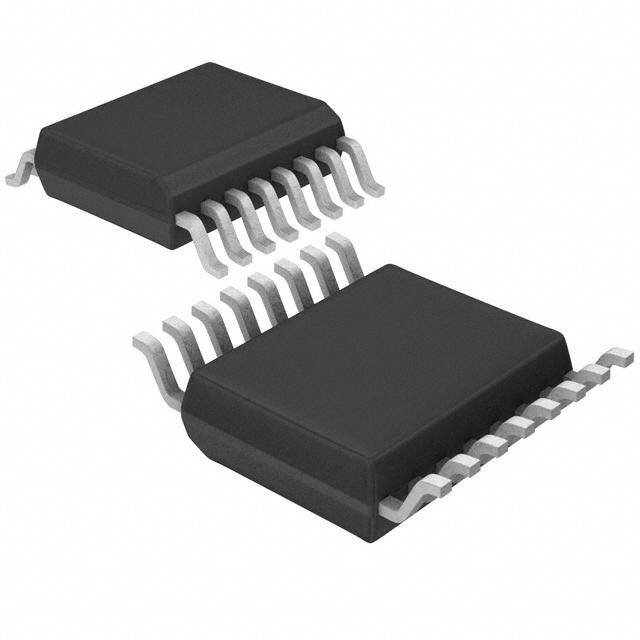
 Datasheet下载
Datasheet下载

